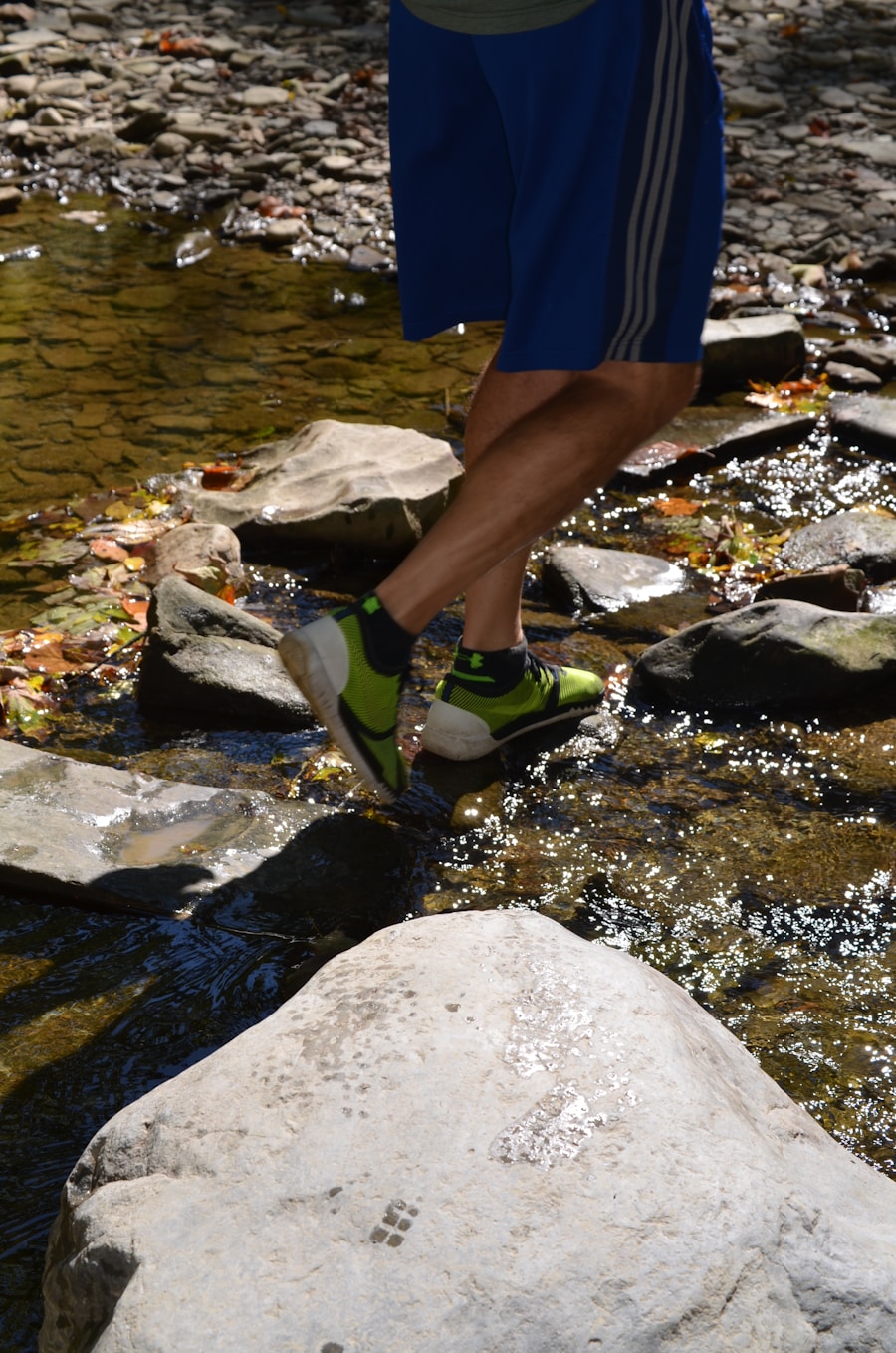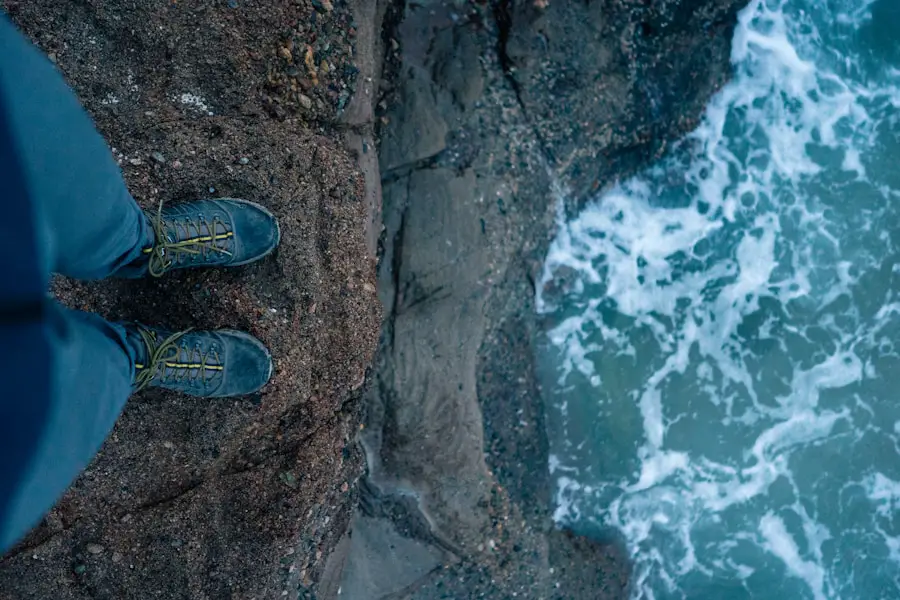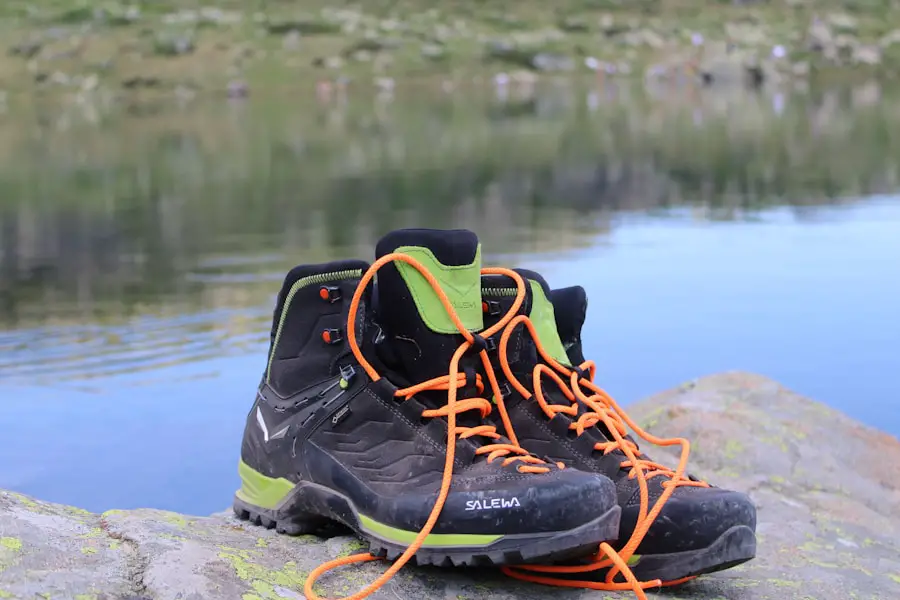When venturing into the great outdoors, the right footwear can make all the difference between an enjoyable experience and a miserable one. Waterproof hiking shoes are essential for those who traverse wet, muddy, or unpredictable terrains. The significance of these shoes lies not only in their ability to keep feet dry but also in their contribution to overall comfort and safety during hikes.
Wet feet can lead to blisters, discomfort, and even hypothermia in colder conditions, making waterproof shoes a critical component of any hiker’s gear. Moreover, the environment in which one hikes can be highly variable. Rain, streams, and dew-covered grass can all contribute to soggy socks and squelching shoes.
Waterproof hiking shoes provide a barrier against these elements, allowing hikers to focus on the trail ahead rather than the discomfort of wet feet. This is particularly important for long-distance hikers or those who plan to spend extended periods in nature, where the risk of foot-related issues increases significantly. The right pair of waterproof shoes can enhance performance and enjoyment, making them a worthy investment for any outdoor enthusiast.
Key Takeaways
- Waterproof hiking shoes are important for keeping your feet dry and comfortable during outdoor activities.
- Investing in waterproof hiking shoes can provide protection from wet and muddy conditions, as well as potential injuries.
- Disadvantages of waterproof hiking shoes include potential breathability issues and higher cost compared to non-waterproof options.
- Before investing in waterproof hiking shoes, consider factors such as fit, material, and intended use to ensure the right choice for your needs.
- Types of waterproof hiking shoes include low-cut, mid-cut, and high-cut options, each offering different levels of ankle support and protection.
Advantages of Investing in Waterproof Hiking Shoes
Investing in waterproof hiking shoes comes with a plethora of advantages that can significantly enhance a hiker’s experience. One of the most notable benefits is the protection they offer against moisture. Whether it’s a sudden downpour or a stream crossing, waterproof shoes ensure that your feet remain dry, which is crucial for maintaining warmth and comfort.
This is especially important in colder climates where wet feet can lead to rapid heat loss and increase the risk of frostbite. In addition to moisture protection, waterproof hiking shoes often feature advanced materials and technologies that enhance breathability. Many models incorporate waterproof membranes like Gore-Tex, which allow moisture vapor from sweat to escape while preventing water from entering.
This balance helps regulate temperature and keeps feet comfortable during strenuous activities. Furthermore, many waterproof shoes are designed with rugged outsoles that provide excellent traction on slippery surfaces, reducing the risk of slips and falls on wet rocks or muddy trails. The combination of these features makes waterproof hiking shoes an invaluable asset for both casual hikers and serious trekkers.
Disadvantages of Waterproof Hiking Shoes

Despite their many advantages, waterproof hiking shoes are not without their drawbacks. One significant disadvantage is that they can be less breathable than non-waterproof alternatives. While modern waterproof materials have improved in terms of breathability, they still tend to trap heat and moisture inside the shoe more than traditional mesh or fabric options.
This can lead to sweaty feet, especially during intense hikes or in warmer weather conditions. Hikers may find themselves dealing with discomfort due to excess moisture buildup inside the shoe. Another consideration is the weight and bulkiness of waterproof hiking shoes.
Many models designed for maximum protection against water can be heavier than their non-waterproof counterparts. This added weight can be a disadvantage for those who prioritize lightweight gear for long-distance hikes or backpacking trips. Additionally, waterproof shoes may come at a higher price point compared to standard hiking footwear.
For budget-conscious hikers, this could be a significant factor when deciding whether to invest in waterproof options.
Considerations Before Investing in Waterproof Hiking Shoes
| Consideration | Description |
|---|---|
| Waterproof Rating | Look for shoes with a high waterproof rating, such as Gore-Tex, to ensure your feet stay dry in wet conditions. |
| Traction | Check the outsole of the shoes for a deep, aggressive tread pattern to provide good grip on wet and slippery surfaces. |
| Support | Consider the level of ankle and arch support provided by the shoes to prevent injuries on uneven terrain. |
| Breathability | Ensure the shoes have good breathability to prevent your feet from getting too hot and sweaty during long hikes. |
| Weight | Choose lightweight shoes to reduce fatigue and improve agility on the trail. |
Before making a purchase, several factors should be taken into account to ensure that waterproof hiking shoes meet your specific needs. First and foremost, consider the type of terrain you will be hiking on. If your adventures primarily take place in dry climates or well-maintained trails, investing in waterproof shoes may not be necessary.
Conversely, if you frequently hike in areas prone to rain or wet conditions, waterproof footwear becomes essential. Another important consideration is the fit and comfort of the shoe. Waterproof hiking shoes should fit snugly but not too tight, allowing for some wiggle room for your toes while providing adequate support for your arches and heels.
Trying on different brands and models is crucial, as sizing can vary significantly between manufacturers. Additionally, consider the type of socks you plan to wear; thicker socks may require a slightly larger shoe size to accommodate them comfortably.
Types of Waterproof Hiking Shoes
The market offers a diverse range of waterproof hiking shoes tailored to various preferences and needs. One popular category is waterproof hiking boots, which provide ankle support and are ideal for rugged terrains and heavy loads. These boots often feature reinforced toe caps and sturdy soles designed for challenging conditions, making them suitable for serious trekkers who require additional support.
On the other hand, waterproof trail runners have gained popularity among those who prefer a lighter shoe for faster-paced hikes or running on trails. These shoes typically offer less ankle support but are designed for agility and speed while still providing adequate protection against water and debris. For those seeking versatility, there are also hybrid models that combine features from both boots and trail runners, offering a balance between support and lightweight performance.
How to Choose the Right Waterproof Hiking Shoes

Selecting the right waterproof hiking shoes involves several key steps to ensure you find a pair that meets your needs effectively. Start by assessing your hiking style and the conditions you typically encounter. If you often hike in wet environments or plan to tackle challenging trails, prioritize features such as ankle support and rugged outsoles.
Conversely, if you prefer lighter footwear for speedier hikes, look for trail runners with waterproof capabilities. Next, pay attention to the materials used in the construction of the shoe. Look for options that incorporate high-quality waterproof membranes like Gore-Tex or eVent, as these materials offer superior protection while maintaining breathability.
Additionally, consider the shoe’s weight; lighter options may be more comfortable for long distances but could sacrifice some durability compared to heavier models. Finally, don’t underestimate the importance of trying on multiple pairs before making a decision. Walk around in the shoes to assess comfort levels and ensure they fit well with your preferred socks.
Pay attention to any pressure points or areas that feel too tight; a proper fit is crucial for preventing blisters and ensuring an enjoyable hiking experience.
Maintaining Waterproof Hiking Shoes
Proper maintenance is essential for prolonging the life of your waterproof hiking shoes and ensuring they continue to perform effectively over time. After each hike, it’s important to clean your shoes thoroughly to remove dirt, mud, and debris that can compromise their waterproof capabilities. Use a soft brush or cloth along with mild soap and water to gently scrub the exterior surfaces.
Avoid using harsh chemicals that could damage the materials. Additionally, reapplying a waterproofing treatment periodically can help restore the shoe’s protective barrier. Many brands offer sprays or waxes specifically designed for their footwear materials; following the manufacturer’s recommendations will yield the best results.
It’s also advisable to store your shoes in a cool, dry place away from direct sunlight when not in use, as prolonged exposure to heat can degrade materials over time. Lastly, pay attention to any signs of wear and tear on your shoes. Inspect the seams for fraying or separation and check the soles for excessive wear that could compromise traction.
Addressing these issues promptly can prevent further damage and ensure that your shoes remain reliable companions on your outdoor adventures.
Is Investing in Waterproof Hiking Shoes Worth It?
The decision to invest in waterproof hiking shoes ultimately hinges on individual preferences and hiking habits. For those who frequently encounter wet conditions or engage in challenging hikes where foot protection is paramount, the benefits of waterproof footwear far outweigh any potential drawbacks. The comfort of dry feet combined with enhanced traction and support can significantly elevate the overall hiking experience.
However, for casual hikers who primarily stick to dry trails or those who prioritize lightweight gear above all else, non-waterproof options may suffice. Ultimately, understanding your specific needs and evaluating how often you will encounter wet conditions will guide you toward making an informed decision about whether waterproof hiking shoes are worth the investment for your outdoor pursuits.
If you are considering getting waterproof hiking shoes, you may also be interested in reading about the best time to travel to Iceland. Iceland’s weather can be unpredictable, with rain and snow common throughout the year. Having waterproof hiking shoes can be essential for exploring the stunning landscapes of Iceland without worrying about wet feet. Check out this article for a seasonal guide on when to visit Iceland for the best outdoor adventures.
FAQs
What are waterproof hiking shoes?
Waterproof hiking shoes are footwear designed to keep your feet dry and comfortable while hiking in wet conditions. They are typically made with waterproof materials such as Gore-Tex or eVent to prevent water from seeping into the shoes.
Why should I consider getting waterproof hiking shoes?
Waterproof hiking shoes are beneficial for hiking in wet or muddy conditions, as they provide protection against moisture, keeping your feet dry and reducing the risk of blisters and discomfort. They are also suitable for hiking in snow or crossing streams.
Are waterproof hiking shoes necessary for all hiking trips?
Waterproof hiking shoes are not always necessary for every hiking trip. If you are hiking in dry conditions or on well-maintained trails, regular hiking shoes or boots may suffice. However, if there is a chance of encountering wet or muddy terrain, waterproof hiking shoes can be beneficial.
What are the drawbacks of waterproof hiking shoes?
While waterproof hiking shoes are effective at keeping water out, they can also trap moisture and heat inside the shoes, leading to potential discomfort and sweat. Additionally, they may not dry as quickly as non-waterproof shoes if they do get wet.
How do I choose the right waterproof hiking shoes?
When choosing waterproof hiking shoes, consider factors such as fit, support, traction, and breathability. It’s important to try on different styles and brands to find the best fit for your feet and the specific terrain you will be hiking on. Additionally, consider the weight of the shoes and the level of ankle support they provide.
